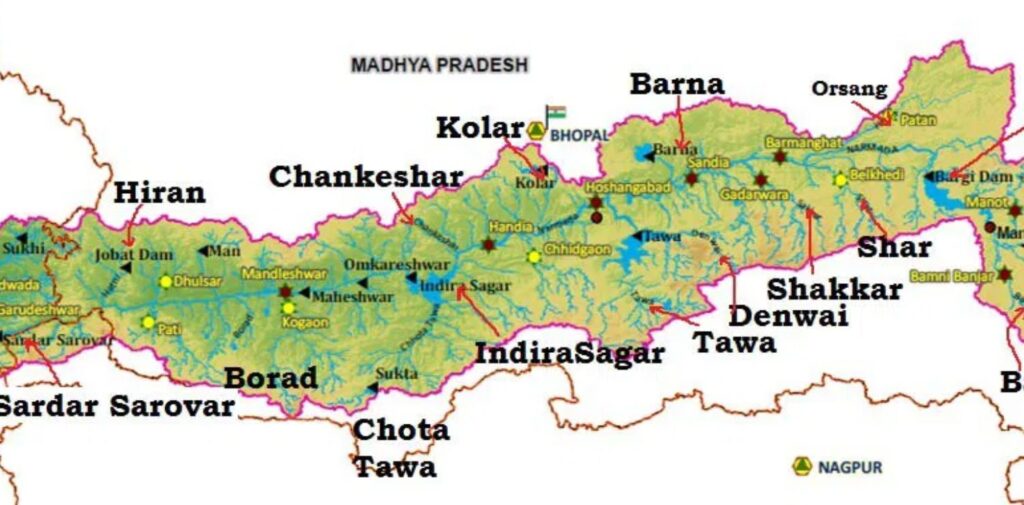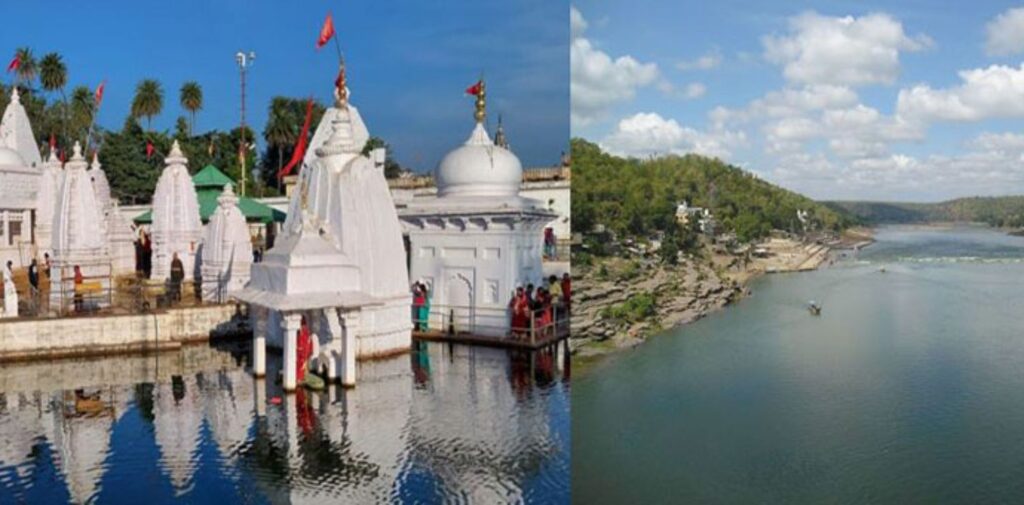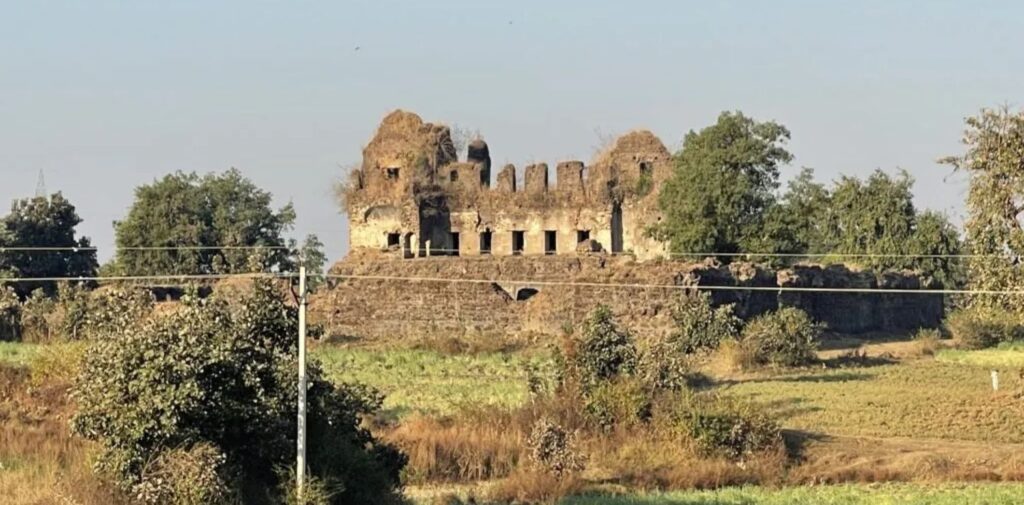The Narmada River holds a special place in the heart of Indian history and culture. Flowing through the central part of India, the Narmada is one of the seven holy rivers in Hinduism, revered for its spiritual and historical significance. It is not just a river but a lifeline that has influenced the civilizations, cultures, and traditions of ancient India for thousands of years. This article explores the importance of the Narmada River in ancient Indian history, tracing its role from being a geographical feature to its cultural and religious prominence.

The Narmada River: A Geographical Overview
The Narmada River is one of the major rivers in India. Originating from the Amarkantak Plateau in Madhya Pradesh, it travels a distance of around 1,312 kilometers before flowing into the Arabian Sea. The river flows through the states of Madhya Pradesh, Maharashtra, and Gujarat. It is unique because, unlike many other rivers in India that flow from the north to the south, the Narmada flows from east to west. This geographical feature makes it stand out in the landscape of India.
The Narmada is one of the few rivers in India that does not have a delta, as it directly flows into the Arabian Sea. It passes through deep valleys, hills, and plains, making it an important geographical feature that has shaped the land around it. The river basin is rich in natural resources and has historically supported agriculture and settlements.
Narmada’s Role in Ancient Indian Civilizations
In ancient times, the Narmada River served as a major lifeline for many civilizations. The fertile plains around the river were ideal for agriculture, and its waters provided a source of irrigation for crops. This made the region prosperous, attracting ancient communities and settlements. The river was a crucial source of water for these early societies, influencing their agriculture, economy, and social life.
Several ancient kingdoms flourished along the Narmada’s banks. The river’s strategic location served as a natural barrier and helped protect settlements. Its waters also supported trade and communication, with boats and other watercraft being used to move goods and people. The river thus acted as a link between various ancient kingdoms and regions, making it a central part of India’s early trade networks.
The Narmada River was also an important part of the spiritual and religious landscape in ancient India. Ancient texts and scriptures mention the river as a sacred entity, often associated with purification and salvation. The belief that bathing in the river could wash away sins is deeply rooted in Hindu tradition. The river was considered the abode of several deities, and many ancient temples and shrines were built along its banks to honor them.

The Narmada in Ancient Indian Mythology
In Hindu mythology, the Narmada River is personified as a goddess. According to popular beliefs, the river is the daughter of Lord Shiva, one of the principal deities in Hinduism. There are various legends associated with the Narmada River that emphasize its spiritual importance.
One such legend is the story of the river’s birth. It is said that Narmada was created by Lord Shiva as a means to cleanse the world. According to the myth, the goddess Narmada was once a celestial nymph who was cursed to descend to the earth as a river. Shiva, who was deeply connected to the river, helped her regain her divine form. As a result, the Narmada River became one of the holiest rivers in India, worshipped for its purity and sacredness.
In addition to its divine association with Lord Shiva, the river is also linked to several other deities. Many important pilgrimage sites are located along its course, including the famous Maheshwar temple in Madhya Pradesh and the Omkareshwar temple, both dedicated to Lord Shiva. These places attract devotees who come to seek spiritual solace and purification through rituals and prayer.
Narmada’s Role in Ancient Trade and Travel
In ancient India, rivers played a crucial role in trade and travel. The Narmada River was no exception. Its route served as an important pathway for merchants, travelers, and pilgrims. The river connected various cities and towns, facilitating the movement of goods, culture, and ideas.
The ancient city of Narmada, located near the river’s mouth, was a thriving trade hub. Traders used the river’s waters to transport goods like spices, textiles, and precious metals. The river also acted as a communication route, connecting people from different regions and promoting cultural exchanges. The influence of the Narmada River on trade and travel helped shape the history and development of several ancient Indian civilizations.
Many ancient structures, including temples and forts, were built along the river, not just for religious purposes but also for defense and trade. These buildings reflect the cultural, architectural, and economic significance of the Narmada in ancient times. The river’s strategic position made it a key player in the growth of many ancient kingdoms, and its importance in trade and travel cannot be overstated.
The Narmada’s Sacred Significance
The Narmada River’s sacredness is deeply rooted in the belief that it purifies the soul and washes away sins. According to Hindu tradition, the Narmada is one of the seven holy rivers, and people from all parts of India visit its banks to perform rituals, offer prayers, and bathe in its waters to seek spiritual merit. It is said that taking a dip in the Narmada on auspicious days can help a person attain Moksha (liberation from the cycle of life and death).
Pilgrims from all over the country visit the river’s ghats, which are steps leading down to the water, for ritual bathing and other religious activities. The river’s spiritual significance is celebrated in several Hindu festivals, and the banks of the river become sites of great religious activity during these times.
Temples dedicated to Lord Shiva and other deities can be found along the Narmada, with the river being an integral part of their worship. The sacredness of the river is emphasized through the many myths, rituals, and cultural practices that surround it. This reverence for the Narmada continues to this day, with millions of people visiting it annually for spiritual and religious reasons.

The Narmada in Ancient Literature
The Narmada is frequently mentioned in ancient Indian texts, such as the Mahabharata, the Ramayana, and various Puranas. These texts not only highlight the river’s geographical importance but also emphasize its spiritual and cultural significance. The Narmada Purana is a well-known text dedicated to the river, detailing its divine attributes, myths, and rituals.
The river is also referenced in the works of ancient poets and scholars. Many literary works from ancient India celebrate the beauty, serenity, and spiritual significance of the Narmada. Poets and writers from various periods, including the Bhakti and Sant traditions, have extolled the river as a symbol of purity and devotion.
Conclusion
The Narmada River holds an essential place in ancient Indian history, both as a physical and spiritual force. Its role in supporting ancient civilizations, facilitating trade and travel, and nourishing the land with its waters made it a vital part of India’s cultural and geographical landscape. The river’s sacredness is deeply embedded in Hindu traditions, with numerous legends, temples, and pilgrimage sites dedicated to it.
From its mention in ancient texts to its continued reverence in modern-day India, the Narmada River has remained a symbol of spiritual significance, natural beauty, and cultural heritage. As we look at its role in ancient Indian history, we can understand how the river shaped the lives of people, influenced religious practices, and played a key role in the development of civilization in the subcontinent.
Today, the Narmada River remains a symbol of India’s deep spiritual and cultural roots, connecting the ancient with the modern and continuing to flow through the hearts of millions of people.




